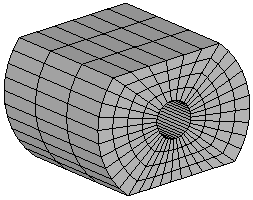Marty,
The barrel on the gun I shoot the most (I have more than one) is just a little under 24". Maybe 1/8" under. The diameter is .900 except that it has been turned down slightly at the front and back. You can read that in the book under "A Rifle's Tale" to determine the reason.
I have ammo that runs from 1047 to 1071 but no 1078 but I could have had some. It would not have been much. I can see by your question the fundamental difference in the way you see a tuner works and the way that I shoot. I don't expect them to go in the same hole, nor do I want them to. What I want them to do is group very well. That's the initial test. The second test is centering the bull across the target. Whether or not they go in the same hole at 50 yards is of no concern to me. I have a scope to zero for that. If the ammo will group and go across the target in what I describe as an "easy" manner, I can do pretty good with it. The 1047 speed ammo you refer to I had very little of, but I did almost win a tournament with it in Chattanooga. Why did I lose? I suspect there is one variable that you never consider and that's the shooter. I have a lot on my mind and it tends to wander. When it does, my scores will go down. I barely lost, but it was still second just because of not keeping my mind on what I was doing.
All ammo is not created equal. I know you believe 80% or so is, but I think it's more like 30% that is actually what I call "good". If I buy it, I consider it "good" although I may choose to sell some on occasion simply because I know I will shoot other ammo predominately. Now you believe you can tune the ammo but the fact remains, and I'm not trying to insult you, your scores do not indicate that. I know you point out that you shot some 250's in IR but so what? I shot several 250's last year including one 250-23X and one 250-18X and that was on just a few IR targets because I generally used those matches to test ammo. Now if, as you say, my gun is out of tune, I must be one hell of a lot better shooter than you are, or my gun is somehow vastly superior to yours. Well, if either one of those is true, and I'm not saying they are, you don't have the equipment or ability to test tuners. I mean you're killing yourself before you start. And don't post any pictures of groups or targets that you shot when you chose. I have all kinds of those that are much better than the results of matches.
Show me match results only. When you start turning ARA scores over 2000 average and IR scores with a significant number of 250's, I'll start to sit up and take notice. I'm not saying at all that your research and analysis is not important or on the correct path, but until you eliminate all other variables, you prove nothing. No argument or insult, it's just the way it is.




